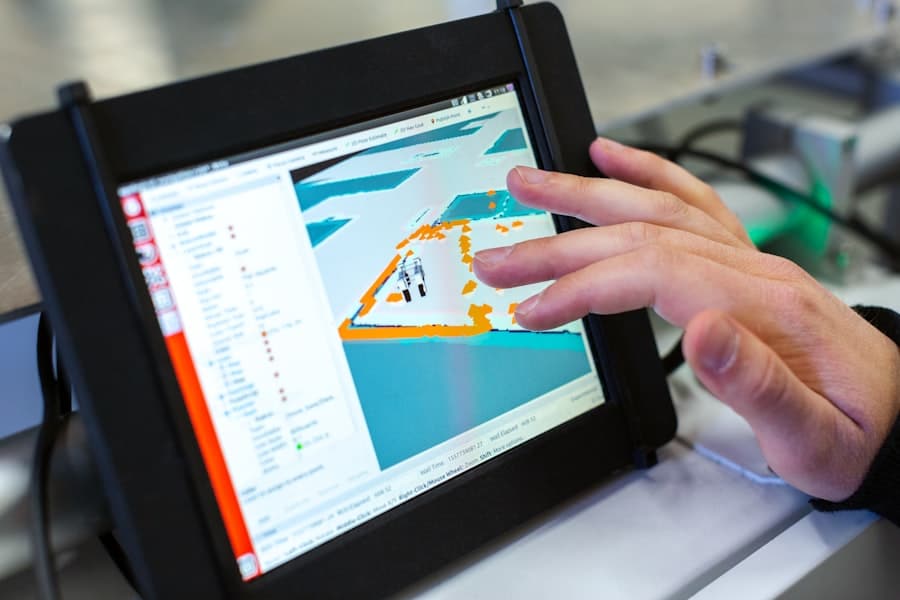Cognitive disabilities encompass a broad spectrum of conditions that affect an individual’s ability to think, learn, and process information. These disabilities can arise from various factors, including genetic predispositions, brain injuries, or developmental disorders. Conditions such as Down syndrome, autism spectrum disorder, and traumatic brain injury fall under this umbrella.
Individuals with cognitive disabilities may experience challenges in areas such as memory, attention, problem-solving, and communication. The severity of these disabilities can vary widely, with some individuals requiring significant support in daily activities while others may function independently with minimal assistance. The impact of cognitive disabilities extends beyond the individual; it affects families, communities, and educational systems.
For instance, children with cognitive disabilities may struggle in traditional classroom settings, necessitating tailored educational approaches to meet their unique learning needs. This often leads to the development of Individualized Education Programs (IEPs) that outline specific goals and accommodations. Understanding the nuances of cognitive disabilities is crucial for fostering an inclusive society that recognizes the potential of every individual, regardless of their cognitive challenges.
Key Takeaways
- Cognitive disabilities can affect a person’s ability to process information, understand, and communicate effectively.
- Individuals with cognitive disabilities face challenges in areas such as learning, memory, attention, problem-solving, and decision-making.
- Augmented Reality (AR) is a technology that overlays digital information onto the real world, enhancing the user’s perception and interaction with their environment.
- AR can be used to assist individuals with cognitive disabilities in areas such as education, communication, social skills, and daily living tasks.
- Using AR for cognitive disabilities can lead to improved engagement, independence, and quality of life for individuals, as well as provide new opportunities for learning and skill development.
Challenges Faced by Individuals with Cognitive Disabilities
Individuals with cognitive disabilities encounter a myriad of challenges that can hinder their daily functioning and overall quality of life. One significant challenge is the difficulty in processing information quickly and accurately. For example, a person with a cognitive disability may take longer to understand instructions or may misinterpret social cues, leading to misunderstandings in social interactions.
This can result in feelings of frustration and isolation, as they may struggle to connect with peers or participate fully in social activities. Moreover, individuals with cognitive disabilities often face barriers in accessing education and employment opportunities. Traditional educational settings may not be equipped to provide the necessary support for these individuals, leading to a lack of engagement and motivation.
In the workplace, employers may overlook the capabilities of individuals with cognitive disabilities due to misconceptions about their abilities. This not only limits their potential for personal growth but also deprives society of the diverse perspectives and talents that these individuals can contribute.
Introduction to Augmented Reality (AR)
Augmented Reality (AR) is a technology that overlays digital information onto the real world, enhancing the user’s perception of their environment. Unlike Virtual Reality (VR), which immerses users in a completely virtual space, AR allows users to interact with both digital elements and their physical surroundings simultaneously. This technology has gained traction in various fields, including gaming, education, healthcare, and training simulations.
By utilizing devices such as smartphones, tablets, or AR glasses, users can experience interactive content that enriches their understanding and engagement with the world around them. The potential applications of AR are vast and varied. In education, for instance, AR can transform traditional learning methods by providing interactive experiences that cater to different learning styles.
In healthcare, AR can assist medical professionals in visualizing complex anatomical structures during surgeries or training sessions. As AR technology continues to evolve, its integration into everyday life becomes increasingly seamless, offering innovative solutions to enhance learning and accessibility for individuals with diverse needs.
Applications of AR in Assisting Individuals with Cognitive Disabilities
The integration of Augmented Reality into the lives of individuals with cognitive disabilities presents numerous opportunities for enhancing their daily experiences. One notable application is in educational settings where AR can facilitate interactive learning experiences tailored to individual needs. For example, AR applications can transform a standard classroom lesson into an engaging experience by overlaying visual aids and interactive elements onto physical objects.
This approach caters to various learning styles and helps reinforce concepts through hands-on interaction. In addition to education, AR can play a pivotal role in daily living skills training for individuals with cognitive disabilities. Applications designed to assist with tasks such as cooking or navigating public spaces can provide step-by-step visual instructions overlaid on real-world environments.
For instance, an AR app could guide a user through the process of preparing a meal by displaying ingredient lists and cooking steps directly on the kitchen counter. This not only promotes independence but also builds confidence in performing everyday tasks.
Benefits of Using AR for Cognitive Disabilities
The benefits of utilizing Augmented Reality for individuals with cognitive disabilities are multifaceted and impactful. One significant advantage is the enhancement of engagement and motivation during learning activities. Traditional methods may not capture the attention of individuals with cognitive disabilities; however, AR’s interactive nature can stimulate interest and encourage participation.
By transforming mundane tasks into engaging experiences, AR fosters a sense of accomplishment and boosts self-esteem. Furthermore, AR can facilitate personalized learning experiences that cater to individual strengths and weaknesses. For instance, adaptive AR applications can assess a user’s progress and adjust the difficulty level accordingly, ensuring that they are challenged without becoming overwhelmed.
This tailored approach not only enhances learning outcomes but also promotes a sense of agency as individuals take control of their learning journey. Additionally, the visual nature of AR aids memory retention by providing contextual cues that reinforce information.
Case Studies and Success Stories
Numerous case studies illustrate the transformative impact of Augmented Reality on individuals with cognitive disabilities. One notable example is the use of AR in special education classrooms where students with autism spectrum disorder have benefited from interactive learning tools. In one case study conducted at a school for children with special needs, an AR application was implemented to teach social skills through role-playing scenarios.
Students engaged with virtual characters that simulated real-life social interactions, allowing them to practice communication skills in a safe environment. The results showed significant improvements in social engagement and confidence among participants. Another success story involves the use of AR for life skills training among adults with cognitive disabilities.
A community organization developed an AR application designed to assist individuals in navigating public transportation systems. The app provided real-time visual cues and step-by-step instructions for boarding buses and trains, significantly reducing anxiety associated with travel. Feedback from users indicated increased independence and a greater willingness to explore their communities without relying on caregivers for assistance.
Future Developments and Possibilities
As technology continues to advance, the future of Augmented Reality holds immense promise for further supporting individuals with cognitive disabilities.
AI could enable personalized learning experiences by analyzing user behavior and adapting content in real-time based on individual progress and preferences.
This level of customization could enhance engagement and effectiveness in educational settings. Moreover, advancements in wearable AR technology could revolutionize how individuals with cognitive disabilities interact with their environments. Smart glasses equipped with AR capabilities could provide real-time assistance by overlaying contextual information directly into the user’s field of vision.
For example, these glasses could identify objects in a grocery store and provide verbal instructions on how to locate them or suggest meal ideas based on available ingredients at home. Such innovations could significantly enhance independence and quality of life for individuals navigating complex environments.
Ethical Considerations and Limitations of AR for Cognitive Disabilities
While the potential benefits of Augmented Reality for individuals with cognitive disabilities are substantial, ethical considerations must be addressed to ensure responsible implementation. One primary concern is privacy; as AR applications often require access to personal data for customization purposes, safeguarding user information is paramount. Developers must establish transparent data usage policies and ensure that users are informed about how their data will be utilized.
Additionally, there is a risk of over-reliance on technology among individuals with cognitive disabilities. While AR can enhance learning and independence, it is essential to strike a balance between technological assistance and developing essential life skills without digital aids. Educators and caregivers should remain vigilant in promoting holistic development that includes both technological proficiency and interpersonal skills.
In conclusion, while Augmented Reality presents exciting opportunities for supporting individuals with cognitive disabilities, careful consideration must be given to ethical implications and potential limitations to ensure that these technologies serve as effective tools for empowerment rather than dependency.
In a related article discussing the importance of technology in everyday life,




